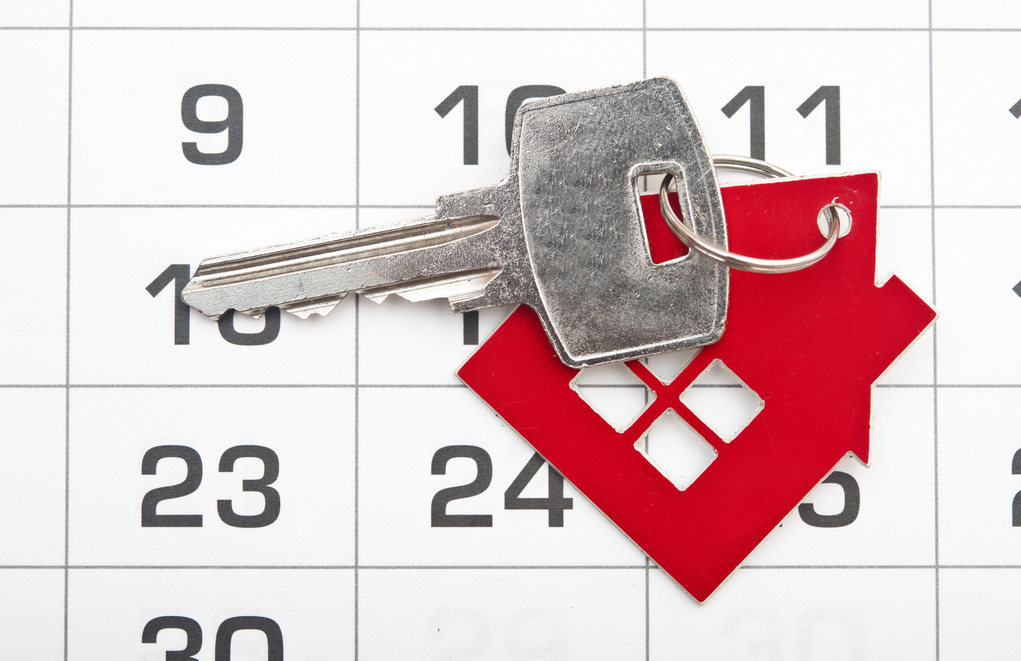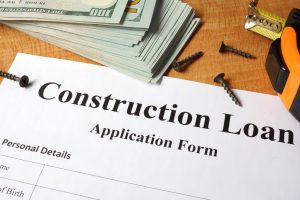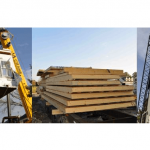How Long Will it Take to Build My New Home?


Building a New Home versus Buying a Used Home
Most people will go through the process of moving into a new home several times in their adult life. For many, that means buying an existing used home or buying a home newly built in a community. The process to purchase and move into one of these homes is relatively straight forward. You either contact a real estate agent or a sales consultant in a community and they lead you through the purchasing process. The main advantages of purchasing an existing home are simplicity and speed. The downside is that you don’t get to select your colors or finishes. Having personal or custom needs met is also difficult, if not impossible, to attain with this approach.
Related: BRINGING CUSTOM BACK TO NEW HOME CONSTRUCTION
Reasons for building a new home vary from owning the land already to not wanting to live in a community to just wanting to design and live in a truly custom home. Building a new home is something that few do. Those that do will typically only build one to three homes in their lifetime. Building codes change, zoning rules change, permitting processes change, lending rules change… everything is different for almost every home a person will build throughout their life. Building a home is not simple, however, it is the only way to own a home that reflects you; your taste in design, colors, and lifestyle. Don’t let the process intimidate you. Once you understand the process then you can appreciate the timeframe and how you can be prepared so that the construction of your new home can move forward efficiently with a minimum of surprises.
The Process Starts Long before Excavation Begins
Let’s face it, looking at home plans is fun! It’s easy to get on the internet and view hundreds if not thousands of floor plans and let your imagination run wild. But actually, that is not the place where you should begin. Budgeting is where it starts. (Share this with your friends on Facebook so they understand how to get started with building their new home.) Some are fortunate enough to pay cash for their homes. For those individuals, the budget isn’t set by a lender but by their own resources and wants. For everyone else, a mortgage lender should be the very first stop in the process.
 When building a new home a construction loan is needed and funds the building of your home. The rules are different and not all lenders provide these loans. Locate a good lender and ask questions. Also, get a pre-qualification. Get a checklist and get all of your documents in order. This is typically the biggest loan most will have in their life and the details are important: credit score, prior credit history, the amount of existing debt, job history, etc. If something needs to be fixed or corrected it is better to find out as soon as possible. Based on this information the lender will tell you how much house you can afford. That becomes your maximum budget.
When building a new home a construction loan is needed and funds the building of your home. The rules are different and not all lenders provide these loans. Locate a good lender and ask questions. Also, get a pre-qualification. Get a checklist and get all of your documents in order. This is typically the biggest loan most will have in their life and the details are important: credit score, prior credit history, the amount of existing debt, job history, etc. If something needs to be fixed or corrected it is better to find out as soon as possible. Based on this information the lender will tell you how much house you can afford. That becomes your maximum budget.
Now that you know your budget you need the next two things: land and a house plan to build. This is kind of a “what comes first, the chicken or the egg” scenario. Do you select your land and then build the perfect house to take advantage of the views, the topography, or the neighborhood? Or, do you select the perfect house plan and house style and then look for the perfect land with the site to build it on? It is the same with the overall budget. If you spend more money on land then you have less money for your home and vice-versa. Determine priorities and budget accordingly.
When selecting or creating a home plan, some use an architect, others contact a builder for suggested home plans. Other start at houseplans.com or other websites for plans and ideas. In any case, selecting a plan and finalizing details is a team effort between the homeowner (architect) and a builder. The details, finishes, roof lines, etc. can have a huge impact on home costs and a partnership with a builder at this time can help you immensely. A builder does this every day. The typical home buyer does this one to three times in a lifetime. Leveraging a good builders experience at this point can help you make selections or decisions based on costs so you can get the highest priority features you require in your new home.
When looking for land there are many attributes to review. However, don’t forget the basics. Does it have public water/sewer or is it going to need a well/septic? Does it have access to electric, phone, and cable? Is it accessible? If you choose to use modular construction can the modules be delivered to the site? Once you get past the basic then you need to think about slope/topography. Do you want a walk out basement with no steps? Does it have a view? Are emergency services close? How much are taxes? If you are building near wetlands, in a high-wind area, near the coast, or in a conservation area then you may spend 10’s of thousands of dollars in extra costs to prepare land for building. If you already own the land, then know what, if any rules may apply when it comes to building your new home.
For many of those building a new a new home, they have an existing home to sell first. Not everyone can afford two homes nor will they qualify for a loan with the burden of two homes on their credit report. Plan for short-term housing. Building a new home is stressful, don’t try to time the sale of your existing home with the completion and availability for the move of your new home. No one needs that much stress. An experienced real estate agent is invaluable when it comes to selling your home. They have access to the most marketing tools and know how to use them. A good agent will advise you on setting your homes selling price based on a Comparative Market Analysis. Next to selecting the right agent, setting the right home price for your market is probably the single biggest thing you can do to facilitate a quick sale of your existing home.
Choosing who to work with for the design and construction of your new home is important. As you are learning, building a new home isn’t a thirty day process. You are going to have a long term relationship with this person and/or company for at least two years. The pre-construction phase, the build phase, and the warranty phase will require a strong relationship for the duration. Just like any relationship, it needs to be built on trust, honesty, and communication. The builder is your expert advisor when it comes to building your new home. You need to feel that he/she has the experience, the knowledge, and the stability to build your home and support you throughout the warranty period.
Construction Begins
When it comes to building a new home, you now know what it takes to get started. Now, everything is in place, you have a finalized home plan, land to build it on, a builder to build it, and funding to pay for it. Now it is time to start… or so you think. Most localities require you to have a building permit. Hopefully, you worked with a builder to have your building permit in hand so that you can begin construction as soon as you have everything else completed.
Depending on the type of construction method you use to build your new home your timeframe can vary. With traditional, onsite construction the process is linear. This means that each step in the process takes place only after the previous step is completed. According to national surveys, the average site built home takes seven months to build. This means that after you have taken care of lining up everything above, the actual building process is seven months. All told, with planning and construction the process needs to start almost one year before you want to actually move into your new home.
Using modular construction, much of the building process can take place concurrently. This means that while the site work (excavation, foundation, etc.) is taking place, your home is being built at the same time. The modular construction process allows your home to be built indoors, protected from the elements. While bad weather can produce delays in the onsite home construction process, modular construction protects homes from much of that risk. Once site work begins, most modular home projects can be completed within three or four months, depending on the specific home.
Let’s Work Backwards – Recapping the Process
When using the modular construction process a new custom home can be built quickly, at a higher quality, and typically at a much better value than one built using traditional onsite construction. Here is the process you will need to work through to move into your new custom built home, assuming you already have your land:
| Complete Construction Onsite | 3 – 4 Months (Modular Construction) |
| Permitting Process | 2 Weeks |
| Construction Loan Approval | 5 Weeks |
| Home Design | 1 -2 Months |
| Total | 6 – 8 Months |
 Now, let’s put this into perspective, if you began planning on January 1st and did NOT live in a high-wind area, flood area, etc. then, with everything moving without delay, you could expect to be moving into your new custom home between July 1st and September 1st. Using traditional onsite construction could have you moving into your new home just in time for Thanksgiving.
Now, let’s put this into perspective, if you began planning on January 1st and did NOT live in a high-wind area, flood area, etc. then, with everything moving without delay, you could expect to be moving into your new custom home between July 1st and September 1st. Using traditional onsite construction could have you moving into your new home just in time for Thanksgiving.
Building a new home can be a very rewarding experience. Understanding the timeframe and being prepared for the pre-construction process can reduce the stress of the unknown. Working with a builder/partner that can act as your trusted advisor through the process will only enhance the experience of building your new custom home!
The post How Long Will it Take to Build My New Home? appeared first on Impresa Modular.




